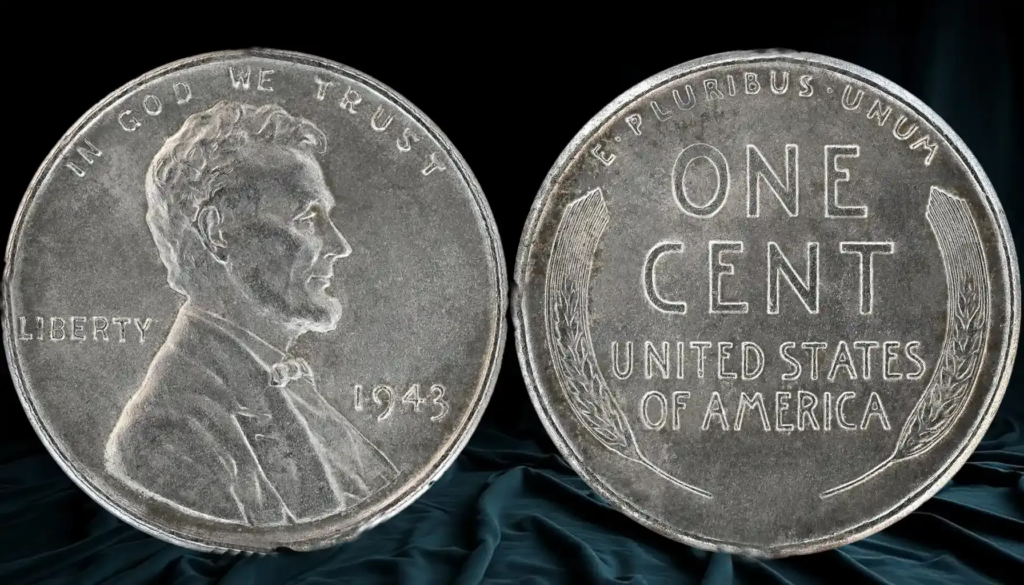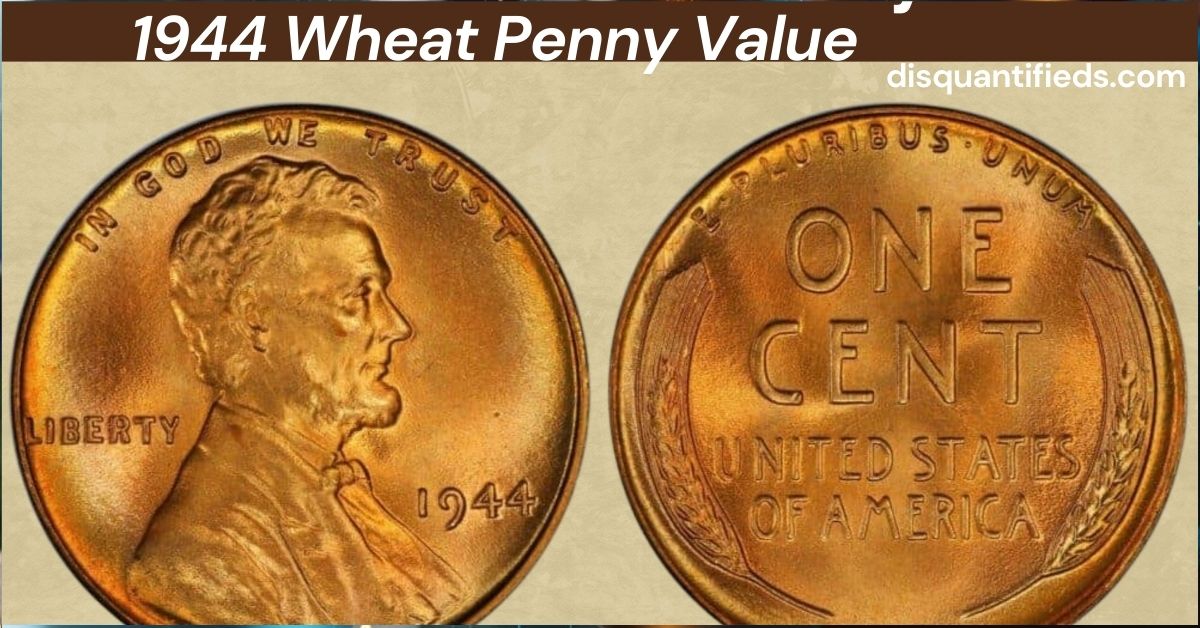1944 Wheat Penny Value: Everything You Need to Know
The 1944 wheat penny is an iconic piece of U.S. currency that holds significant historical value for coin collectors and enthusiasts. While most 1944 wheat pennies are not worth a fortune, certain factors can increase their value. If you are curious about the value of your 1944 wheat penny, this comprehensive guide will break down everything you need to know, from its historical background to its potential worth today.
In this article, we will explore the various factors that influence the value of a 1944 wheat penny, including its condition, mint mark, and the impact of rare varieties. By the end of this article, you will have a thorough understanding of the 1944 wheat penny value and how to evaluate your own collection.
What Is a 1944 Wheat Penny?
The 1944 wheat penny is a one-cent coin that was minted in the United States in 1944. It features the famous wheat design by sculptor Victor David Brenner, which was used on pennies from 1909 until 1958. The obverse (front) of the coin depicts Abraham Lincoln, the 16th president of the United States, while the reverse (back) shows two stalks of wheat surrounding the words “ONE CENT.”
The 1944 penny holds particular interest for collectors because of its unique historical context. During World War II, the U.S. faced a shortage of copper, which led to a change in the composition of the penny. While most 1944 pennies were made from a mixture of copper and tin, a small number of them were struck from steel planchets (blanks) that had been leftover from 1943. These steel pennies are extremely rare and highly valuable.

Mint Marks and Their Importance
Mint marks are small letters found on coins that indicate where they were produced. The 1944 wheat penny has three main mint marks:
- Philadelphia (no mint mark): These pennies were minted in Philadelphia and do not have a mint mark.
- Denver (D mint mark): These pennies were minted in Denver, and they feature a “D” mint mark.
- San Francisco (S mint mark): These pennies were minted in San Francisco, and they have an “S” mint mark.
The mint mark can influence the value of the coin, as some mints produced fewer pennies than others in 1944, making certain varieties more valuable to collectors.
Factors That Affect the Value of a 1944 Wheat Penny
Several factors determine the value of a 1944 wheat penny. These factors include its condition, the mint mark, and whether it is a rare steel variety. Let’s explore these in more detail.
Also Read: Crypto30x.com Zeus: The Future of Automated Crypto Trading
1. Condition of the Coin
One of the most important factors in determining the value of any coin is its condition. The better the condition of the coin, the more valuable it tends to be. Coins are graded on a scale from 1 to 70, with higher numbers indicating better condition. Here is a basic breakdown of common coin grades:
- Good (G): The coin shows wear, but the design is still visible.
- Very Good (VG): The coin has significant wear, but the details are clearer than in the “Good” grade.
- Fine (F): The coin shows moderate wear, but most of the details are visible.
- Very Fine (VF): The coin has light wear, with most details visible and sharp.
- Extremely Fine (XF): The coin shows very little wear, with sharp details and almost no signs of circulation.
- Uncirculated (MS): The coin has no wear and retains its original mint luster.
A 1944 wheat penny in Uncirculated condition is much rarer and more valuable than one in Good condition. Coins that are well-preserved tend to fetch higher prices at auction or from coin dealers.
2. Mint Mark
As mentioned earlier, the mint mark on a 1944 wheat penny can affect its value. The three main mint marks—Philadelphia, Denver, and San Francisco—result in slight variations in the number of coins produced each year.
- Philadelphia: The majority of 1944 pennies were minted in Philadelphia, making these the most common variety. These coins are typically the least valuable unless they are in excellent condition.
- Denver (D): The Denver mint produced fewer 1944 wheat pennies than Philadelphia, making these coins slightly more valuable than the ones from Philadelphia.
- San Francisco (S): The San Francisco mint produced the fewest 1944 pennies, making this variety more sought after by collectors. As a result, the value of 1944 wheat pennies with an “S” mint mark can be higher, especially in uncirculated conditions.
3. Rare Steel 1944 Wheat Pennies
The 1944 steel wheat penny is the most valuable and rarest of all the 1944 wheat pennies. Most pennies in 1944 were made of copper, but a few were mistakenly struck on leftover steel planchets that were used for the 1943 pennies. This mistake resulted in a small number of steel 1944 pennies, which are incredibly rare and highly sought after by collectors.
Also Read: High Risk Merchant Account at HighRiskPay.com: Your Ultimate Guide
If you have a 1944 wheat penny made of steel, it could be worth hundreds or even thousands of dollars, depending on its condition. It’s important to note that steel pennies from 1944 are not common, and most 1944 pennies were minted with copper.
4. Other Factors
In addition to the condition, mint mark, and composition, other factors that can influence the value of a 1944 wheat penny include:
- Rarity: Some 1944 wheat pennies are rarer than others due to low mintages or errors in production.
- Demand: The popularity of coin collecting and the demand for certain varieties can affect the value of a coin.
- Historical Significance: The historical context in which the coin was minted, such as the impact of World War II on U.S. coinage, can make a coin more valuable to certain collectors.
How to Determine the Value of Your 1944 Wheat Penny
To determine the value of your 1944 wheat penny, you will need to consider the following steps:
1. Examine the Condition
Start by grading the coin based on its wear and overall condition. If you’re unsure about the grade, consult a professional coin grading guide or take the coin to a reputable dealer for an expert evaluation.
2. Check the Mint Mark
Look for the mint mark on the obverse side of the coin. If your penny doesn’t have a mint mark, it was likely minted in Philadelphia. If there is a “D” or “S” mint mark, it indicates that the coin was minted in Denver or San Francisco, respectively.
3. Check the Composition
The majority of 1944 wheat pennies are made of copper, but if you suspect that your penny might be a rare steel variety, look for signs of a steel coin, such as a silver-like color. Use a magnet to check if the coin is magnetic—steel pennies are magnetic, while copper pennies are not.
4. Research Market Prices
Once you know the condition, mint mark, and composition of your coin, research its current market value. Check online coin marketplaces, auction results, and professional coin grading services to get an accurate estimate.
Also Read: Openhouseperth.net Insurance: A Comprehensive Guide for Homeowners and Renters
1944 Wheat Penny Value: What to Expect
As of recent market trends, most 1944 wheat pennies have the following approximate values:
- 1944 Wheat Penny (Philadelphia Mint, Copper): $0.10 to $1.00, depending on the condition.
- 1944 Wheat Penny (Denver Mint, Copper): $0.15 to $2.00, depending on the condition.
- 1944 Wheat Penny (San Francisco Mint, Copper): $0.50 to $3.00, depending on the condition.
- 1944 Steel Wheat Penny: $100 to $1,000+ for an uncirculated example, depending on condition.
The rare steel 1944 penny can command the highest prices, but they are extremely difficult to find. The value of a steel penny increases significantly with higher grades.
FAQs About the 1944 Wheat Penny Value
How can I tell if my 1944 penny is made of steel?
Steel pennies are magnetic, while copper pennies are not. You can use a magnet to check if your penny is magnetic. If it is, then you likely have a rare steel 1944 penny.
Why is the 1944 wheat penny so valuable?
The 1944 wheat penny is valuable due to its historical significance, rarity, and the possibility of finding rare steel varieties that were accidentally struck with leftover steel planchets from 1943.
What is the most valuable 1944 wheat penny?
The most valuable 1944 wheat penny is the rare steel variety. In good condition, it can be worth hundreds or even thousands of dollars.
Where can I sell my 1944 wheat penny?
You can sell your 1944 wheat penny to a reputable coin dealer, through online marketplaces, or at auction. Be sure to get a professional evaluation of your coin’s condition and value before selling it.
How do I grade my 1944 wheat penny?
Grading involves examining the coin for wear and damage. A higher grade corresponds to a better-preserved coin with sharper details. Consult a coin grading guide or a professional for assistance if you’re unsure about the grade.
Conclusion
The 1944 wheat penny is an important and fascinating coin for collectors. While most of these coins are worth just a few cents or dollars, the rare steel variety can be worth hundreds or even thousands of dollars. If you’re fortunate enough to find a rare 1944 steel penny or one in excellent condition, it could be a valuable addition to your collection. Understanding the factors that influence the value of these pennies, such as mint mark, condition, and rarity, will help you assess their worth and make informed decisions.






